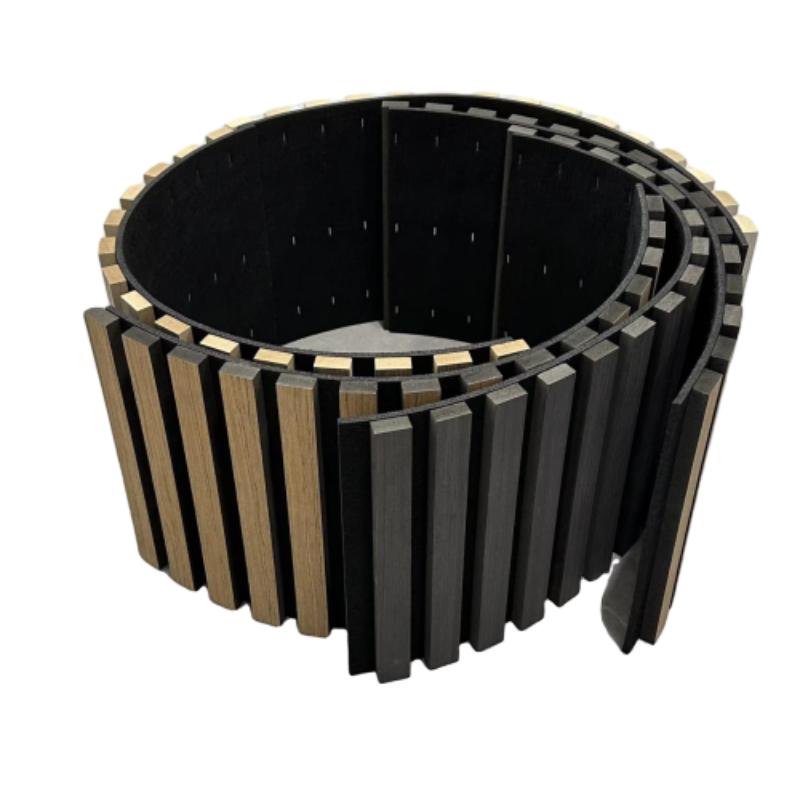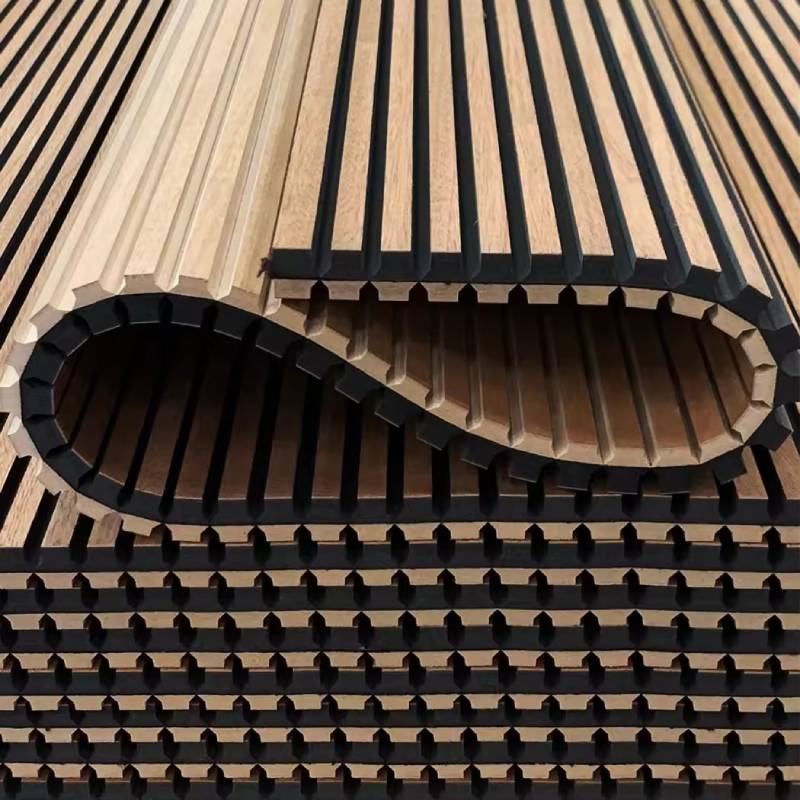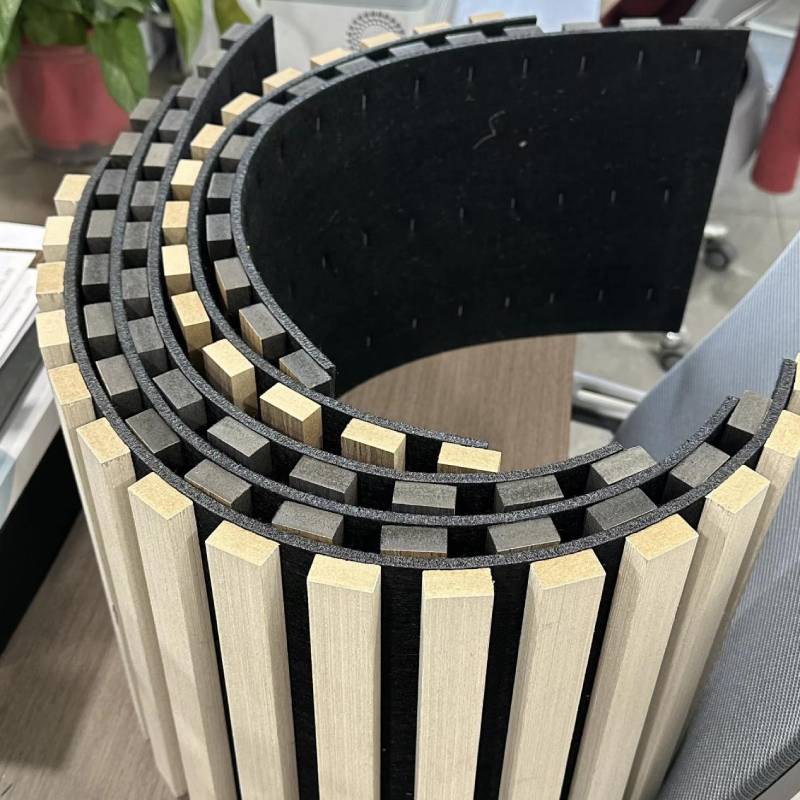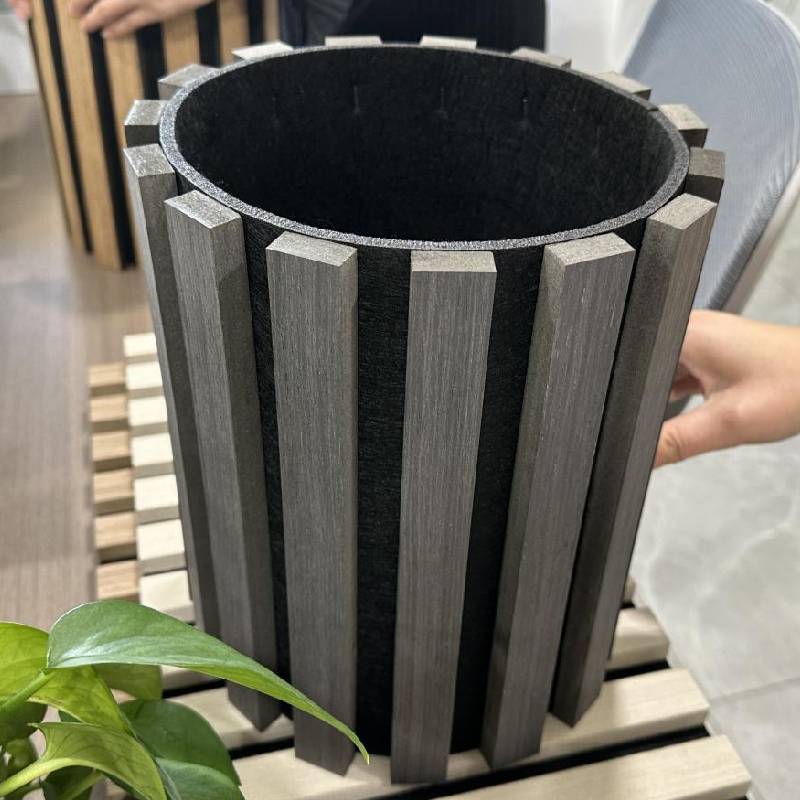The Ascendance of Walnut Acoustic Panels in Modern Architecture
In contemporary architectural design and interior acoustics, the demand for sophisticated and highly effective sound management solutions continues to escalate. Addressing this need, walnut acoustic wall panels have emerged as a paramount choice. These panels not only deliver exceptional sound absorption and diffusion capabilities but also contribute significantly to the aesthetic appeal of a space, blending natural elegance with cutting-edge acoustic engineering. The inherent warmth and rich grain of walnut wood provide an unparalleled visual and tactile experience, making them ideal for high-end residential, commercial, and institutional applications. This integration of form and function highlights a growing industry trend towards materials that do not compromise on design while offering superior performance in managing soundscapes.
The market for high-performance acoustic materials is experiencing robust growth, driven by stringent building codes for noise control and an increased awareness of acoustic comfort's impact on productivity and well-being. According to a recent industry report, the global acoustic panels market is projected to reach USD 9.5 billion by 2027, growing at a CAGR of 6.2% from 2020. Within this expanding market, premium materials like solid wood, particularly walnut, are capturing a significant segment due to their durability, environmental attributes, and superior aesthetic value. Manufacturers are now focusing on creating versatile designs, such as the Flexible 3D Walnut Bent Wood Slatted Wooden Ceilings Wall Akupanel Acoustic Wall Panels, which offer both sound control and sculptural interest, pushing the boundaries of traditional acoustic treatments into decorative elements.
Precision Craftsmanship: The Manufacturing Process of Walnut Acoustic Panels
The production of high-quality walnut acoustic wall panels is a meticulous process, combining traditional woodworking techniques with advanced manufacturing technologies. It commences with the careful selection of premium American Black Walnut timber, renowned for its stability, rich color, and distinctive grain patterns. This selection ensures both the aesthetic quality and structural integrity of the final product. Following procurement, the timber undergoes a precise drying process to achieve optimal moisture content, typically between 6% and 8%, which is critical for preventing warping or cracking post-installation and ensuring longevity. This material preparation is fundamental to the long-term performance and stability of the panels.

The core manufacturing process involves several key stages. Firstly, the walnut wood is precisely cut into slats using advanced CNC (Computer Numerical Control) machinery, ensuring exact dimensions and consistent profiles for optimal acoustic performance and aesthetic uniformity. For panels featuring bent wood elements, specialized steam-bending or lamination techniques are employed to achieve the desired curvatures without compromising the wood's integrity. These slats are then meticulously attached to a high-density acoustic felt backing, often made from recycled PET fibers, which provides the primary sound absorption layer. This backing typically has a density of 9mm or 12mm, contributing significantly to the panel's Noise Reduction Coefficient (NRC). Quality control checkpoints are integrated throughout the process, adhering to stringent standards such as ISO 9001 for quality management and ASTM E84 for surface burning characteristics, ensuring product safety and performance. The typical service life for properly installed and maintained walnut acoustic panels exceeds 20 years, making them a durable investment for various environments, including commercial offices, recording studios, and high-end residential spaces.
Technical Specifications and Performance Metrics
Understanding the technical specifications of walnut acoustic wood wall panels is crucial for architects, interior designers, and project managers. These parameters dictate the effectiveness of the panels in managing sound within a given space. Key metrics include the Noise Reduction Coefficient (NRC), which quantifies the amount of sound energy absorbed by a material on a scale from 0.00 to 1.00, and the Sound Transmission Class (STC), which measures the ability of a material to block sound transmission. High NRC values, typically ranging from 0.70 to 0.95 for slat acoustic panels with adequate backing, indicate excellent sound absorption, reducing reverberation and echo.

Furthermore, the composition and dimensions of these panels play a significant role. The slat dimensions (width, thickness, and spacing), along with the density and thickness of the acoustic felt backing, are optimized to target specific frequency ranges for absorption. Thinner slats with wider gaps tend to absorb higher frequencies, while thicker slats or more dense backing can address lower frequencies. Below is a detailed table outlining typical parameters for premium walnut acoustic wall panels, demonstrating their robust performance and design versatility.
Versatile Applications and Emerging Industry Trends
The adaptability and aesthetic versatility of walnut acoustic wall panels make them suitable for an extensive range of applications across diverse industries. In corporate environments, they are extensively used in boardrooms, open-plan offices, and conference rooms to enhance speech intelligibility and reduce noise distractions, thereby improving productivity. For the hospitality sector, these panels create serene and luxurious atmospheres in hotel lobbies, restaurants, and ballrooms, where acoustic comfort significantly impacts guest experience. Educational institutions leverage them in lecture halls, libraries, and classrooms to optimize learning environments by mitigating excessive reverberation.

Beyond traditional uses, emerging industry trends see these panels integrated into retail spaces to improve the shopping experience by reducing ambient noise, and in healthcare facilities for patient comfort in waiting areas and therapy rooms. The shift towards biophilic design, which incorporates natural elements into built environments, further boosts the appeal of walnut acoustic panels. Their natural wood finish aligns perfectly with this trend, promoting a sense of calm and connection to nature. Furthermore, the increasing demand for sustainable building materials positions FSC-certified walnut panels as a preferred choice, contributing to green building certifications like LEED and BREEAM. Their inherent ability to improve indoor air quality by reducing VOC emissions, especially when coupled with formaldehyde-free backings, reinforces their role in health-conscious design.
Unparalleled Advantages: Why Choose Walnut Acoustic Wall Panels?
Opting for walnut acoustic wall panels presents a myriad of advantages that transcend mere sound control. Foremost is their superior acoustic performance, significantly reducing reverberation time and echo, thereby creating more comfortable and functional spaces. The slatted design, combined with an absorptive backing, effectively manages sound waves across a broad frequency spectrum, a crucial factor in complex acoustic environments. Beyond functionality, the aesthetic contribution is invaluable. Walnut's rich, dark tones and intricate grain patterns add a touch of timeless elegance and sophistication, transforming ordinary walls into striking architectural features. This aesthetic versatility allows for seamless integration into various design schemes, from minimalist modern to classic opulent.

Durability is another significant benefit. Walnut wood is naturally resilient and, when properly treated and maintained, offers exceptional longevity, resisting wear and tear in high-traffic areas. This makes them a cost-effective solution over the product's long lifecycle, reducing the need for frequent replacements. Environmentally, many manufacturers, like YTAKUPANEL, prioritize sustainable sourcing, utilizing responsibly harvested walnut and recycled PET felt backings. This commitment reduces the ecological footprint of the panels and supports green building initiatives. Furthermore, the ease of installation, often involving simple screw fixation or adhesive, allows for efficient project timelines and reduced labor costs. These combined benefits underscore why walnut acoustic panels are becoming the preferred solution for discerning clients seeking both performance and prestige.
Tailored Solutions: Customization and Application Cases
Recognizing that every project has unique acoustic and aesthetic requirements, leading manufacturers offer extensive customization options for walnut acoustic panels. This includes varying slat dimensions and spacing to fine-tune acoustic absorption properties for specific frequency ranges, essential for critical listening environments like recording studios or concert halls. Panel dimensions can be custom-cut to fit precise wall or ceiling layouts, minimizing waste and ensuring seamless integration. Furthermore, finishes can be tailored, from natural oil finishes that highlight the wood's inherent beauty to fire-retardant lacquers meeting stringent safety codes without compromising visual appeal. This level of customization ensures that the acoustic solution is not just effective but also perfectly aligned with the project's design vision.

Several notable application cases exemplify the transformative impact of walnut acoustic wood wall panels. In a recent corporate headquarters project in London, over 2,000 square meters of custom-sized panels were installed in open-plan offices and collaboration zones. The result was a dramatic reduction in ambient noise from 70 dB to a comfortable 45 dB, significantly improving employee concentration and communication. Another project involved a high-fidelity home theater in Silicon Valley, where specialized bent wood walnut panels were designed to optimize sound diffusion and absorption, creating an unparalleled immersive audio experience. These cases highlight not only the technical prowess of these panels but also their ability to elevate the perceived value and functionality of high-profile spaces.
Addressing Common Concerns: FAQ & Trust Assurance
Frequently Asked Questions (FAQ)
-
Q: Are walnut acoustic panels suitable for high-humidity environments?
A: While walnut is a stable wood, prolonged exposure to high humidity or direct water can affect any wood product. For consistently high-humidity areas (e.g., bathrooms, indoor pools), it is recommended to specify panels with a moisture-resistant treatment or opt for alternative materials. General indoor environments are well-suited, and proper acclimatization during installation is advised.
-
Q: How do these panels impact indoor air quality?
A: Our walnut acoustic wall panels are designed with indoor air quality in mind. We utilize E0-grade materials for wood components and recycled PET felt for the backing, which are inherently low in VOCs (Volatile Organic Compounds). This ensures that our panels contribute to a healthy indoor environment, aligning with green building standards.
-
Q: What is the typical lead time for a custom order?
A: Standard product delivery typically ranges from 15-20 business days. For custom orders of walnut acoustic panels, the lead time can vary based on complexity and volume, usually between 4-6 weeks from order confirmation and design approval. We maintain transparent communication throughout the production and logistics process to keep clients informed.
Our Commitment to Quality and Support
We stand by the quality and performance of our walnut acoustic panels. Each panel undergoes rigorous quality control inspections to meet or exceed industry standards, including ISO 9001 and ASTM certifications for acoustic performance and fire safety. We offer a comprehensive 10-year limited warranty against manufacturing defects, underscoring our confidence in the durability and longevity of our products. Our dedicated customer support team is available to assist with product selection, technical specifications, installation guidance, and post-sales support, ensuring a seamless experience from initial inquiry to project completion. This unwavering commitment to product excellence and client satisfaction builds a foundation of trust with our B2B partners.
Conclusion
The integration of walnut acoustic panels into modern architectural and interior design represents a convergence of aesthetic excellence and functional acoustic engineering. These panels offer a sophisticated solution for managing soundscapes across a diverse range of environments, from high-performance studios to bustling commercial spaces. Their natural beauty, coupled with impressive noise reduction capabilities and sustainable attributes, positions them as a premier choice for architects, designers, and developers committed to creating aesthetically pleasing, acoustically optimized, and environmentally responsible spaces. As the demand for refined interior acoustics continues to grow, walnut acoustic solutions stand ready to meet the challenge, providing lasting value and enhancing the human experience within built environments.
References
- American Society for Testing and Materials (ASTM) International. ASTM C423: Standard Test Method for Sound Absorption and Sound Absorption Coefficients by the Reverberation Room Method.
- International Organization for Standardization (ISO). ISO 354: Acoustics — Measurement of sound absorption in a reverberation room.
- American Society for Testing and Materials (ASTM) International. ASTM E84: Standard Test Method for Surface Burning Characteristics of Building Materials.
- United States Green Building Council (USGBC). LEED (Leadership in Energy and Environmental Design) rating system.
-
Waterproof Dog Blankets for Indoor and Outdoor UseNewsAug.01,2025
-
Sustainable Wool Cat Beds Eco-Friendly Choices for Pet OwnersNewsAug.01,2025
-
Snuffle Ball Benefits for Dogs Mental Stimulation and ExerciseNewsAug.01,2025
-
Puppy Treat Puzzles as Social Tools Fostering Bonding Through PlayNewsAug.01,2025
-
Custom Wooden Pet Houses Tailored to Your Pet’s PersonalityNewsAug.01,2025
-
Corrosion Resistance in Environments: A Guide for Washer Hose ClampsNewsAug.01,2025
